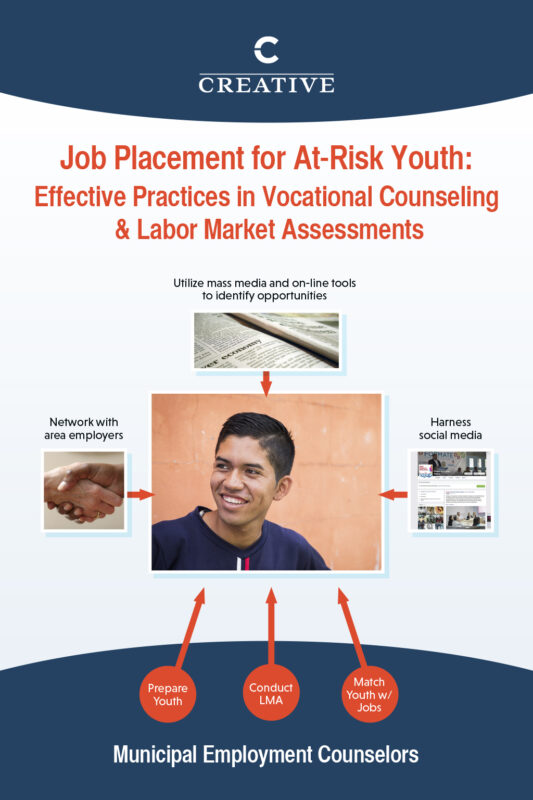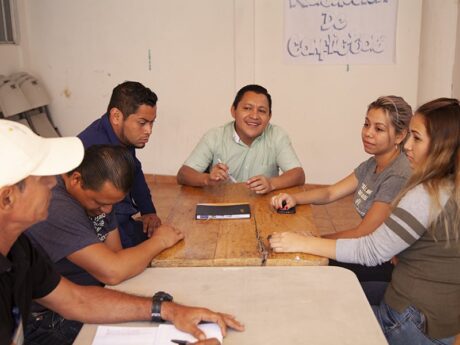
The emotion of landing that first, formal job is tremendously powerful for an at-risk youth. It is also an important milestone as they transition to a successful adulthood.
In many economies around the world, such as those in Central America, easily 70 percent of all jobs are in the informal sector and don’t offer access to benefits such as holidays, worker protection and career advancement. Obtaining a job in the formal sector is daunting for even well-qualified candidates.
At-risk youth are typically 18 to 29 years old, have had very limited access to education and vocational training and live in high-crime communities. They may have experienced the trauma of violence, may find their mobility to be constrained because of gang boundaries and probably lack adequate family support.
For them, getting a job in the formal sector has often been out-of-reach.
Yet, nowhere is the importance of that first job more critical than in the high-violence neighborhoods across Central America, where a career path can help to keep at-risk youth on track for success and off the streets where they may become victims or even perpetrators of crime.
A high-functioning workforce development system provides at-risk youth with quality services to prepare them with the skills and access they need to get a job in the formal sector.
Solutions in El Salvador
Several workforce development system innovations developed by Creative Associates International in El Salvador may provide some solutions for at-risk youth.
In communities within 12 high-crime municipalities across the country, Creative Associates has worked closely with employers, youth and municipalities to prepare youth for work as part of the El Salvador Crime and Violence Prevention Project, which is supported by the U.S. Agency for International Development and other donors.
The innovative engine behind the approach is a cadre of trained, certified Municipal At-risk Youth Employment Counselors, who bridge the needs of area employers with the skills of the communities’ youth, aligning demand and supply for labor.
In just nine months of operation in 2015, these 12 Employment Counselors have placed 330 at-risk youth ages 17 to 29 in their first formal sector jobs across a broad range of manufacturing, services and agribusiness sectors.
Through rigorous analysis of the employment services availability in El Salvador’s high-crime municipalities, combined with extensive input from organizations and youth leaders, the Employment Counselors undertake three key activities. They are: Assist youth to prepare for formal sector employment through developing a work readiness profile; conduct labor market assessments; and match youth to job vacancies.
Creative Associates developed a curricula to build these competencies of these Employment Counselors. Our project identified qualified candidates and offered the required training, certifying graduates who demonstrated mastery of all three competencies.
The first class of Counselors was hired by 12 high-crime municipalities. The municipalities cover their salaries, the costs to operate the municipal employment office and travel expenses for their Employment Counselor. This model ensures sustainability of the counseling function once USAID funding ends.
Overcoming challenges facing at-risk youth

At-risk youth face a host of challenges and pressures that constrain their ability to prepare for and get a job. They often have low educational attainment, limited vocational skills and low levels of connectedness to family and community.
Municipal Employment Counselors are well-versed in the unique needs of the at-risk youth they serve.
They assist the youth in preparing a curriculum vitae/profile that highlights the assets they have developed through sports, volunteering or their faith communities. Counselors conduct work readiness testing, identify youth areas of professional interest and assist youth in gathering the required paperwork and references. They meet weekly with their youth clients to advise them on job availability, career paths, required training and options for financing training.
Identifying opportunities through labor market assessments
High-quality labor market assessments are critical to building a workforce system that prepares students with the skills employers need. Without knowledge about the needs of employers and the demand for skills in the labor market, vocational training can be off target, resulting in a skills mismatch and roadblocks rather than opportunity.
Unfortunately, many labor assessments are incomplete.
Some focus solely on national level or sectoral level data. Others generate data on labor market needs but fail to get in the hands of the schools, the families and the youth who need it. Still others fail to take into account the educational background and mobility and safety constraints so common among at-risk youth.
Creative Associates worked with the Municipal Employment Counselors to empower them to conduct and regularly update a labor market assessment to rectify these shortcomings and identify job vacancies for their youth clients.
The Counselors rely on a number of tools, including:
- Through a municipal database of employers, the Employment Counselors develop relationships with business owners and human resources managers. They check in frequently with them to identify their hiring needs.
- Utilizing traditional media and online tools, the Employment Counselors continuously search for formal sector job opportunities.
- Each Employment Counselor has an institutional Facebook page to engage youth and employers in posting opportunities for jobs and training, and celebrating successful job placements.
The Counselors create and update a database of youth skills and employer needs. They meet with their youth clients weekly at neighborhood Outreach Centers to prepare them for employment, providing them with guidance, interview practice and job matching.
This model for serving at-risk youth has proven effective at providing youth with the services they need to prepare for and obtain a first job in the formal sector, attaining a key milestone as they transition to a successful adulthood.
The model is easily adapted to other contexts in additional countries and municipalities. It is evidence-informed, building on the successful El Salvador pilot. It is sustainable, as the Municipal Employment Counselors are located in and funded by the local municipal offices. And it is systemic, targeting and overcoming key gaps in the workforce development infrastructure for at-risk youth.
Katy Vickland is the Workforce Development and Youth Employment Practice Area Director at Creative Associates International. Follow her on Twitter at @katyvickland.



